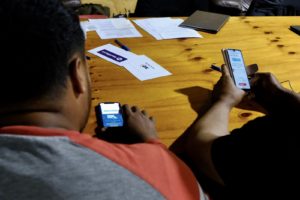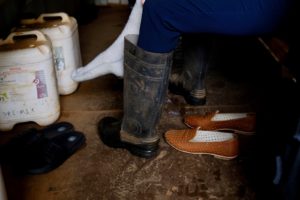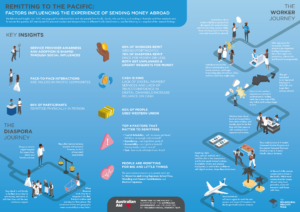Last week it was announced that up to 170 people from Vanuatu can soon leave their families and come to work in Australia on farms. The program is a trial resumption of one of Australia and New Zealand’s seasonal labour mobility schemes. The schemes are mutually beneficial: farms in Australia and New Zealand gain much-needed labour, and workers capitalise on the steady wages to provide income to their families back home (‘remitting’).
Pacific Island nations are highly reliant on these remittances. For example, in Tonga, remittances account for 40.7% of total GDP. COVID-19 poses a threat to remittances. On a global scale, the World Bank predicts that remittances to low and middle income countries will fall by 19.7%, representing the sharpest decline of remittances in recent history. Ensuring these workers’ money gets home is more important than ever before.
The transaction costs of sending money to the Pacific Islands are high and vary across providers and methods. Part of this is due to systemic factors (e.g. what services are available in a particular country, town, or island), but it is also driven by individual choices (e.g. people not using the lowest cost providers for various personal reasons). With the support of the Australian and New Zealand Governments, BIT set out to understand the factors influencing choice of remittance provider and method. The project aimed to support remitters to ensure the greatest amount of their money made it back to the Pacific.
 Participants testing digital remittance services. In the background, cards from a visual task
Participants testing digital remittance services. In the background, cards from a visual task
Last year, we traveled to regional, remote, and suburban communities in Australia and New Zealand to interview 92 diaspora and labour mobility workers from six different Pacific Island nations. Our team in New Zealand went to interview a few workers but found themselves with 40 willing participants! After introductions were made, the workers sung a traditional Tongan hymn, ‘Oku ai ha ki’i fonua’. We recorded their beautiful singing and invite you to listen here.

What we found
While we may think of remittances as a financial decision, for many of the people we spoke to it was an emotional one. As one interviewee put it “It’s not that you’re sending money – you’re sending your heart.”
The remittances were often used to address immediate life or death scenarios, such as ensuring a family member could access urgent medical care. Others were used so that their family members could buy food, build houses, or attend school. In other instances, they were gifts for a wedding or a funeral. Remittances were not about money at all: they were about family, safety, culture, and community.
Some common themes and insights that emerged from our interviews are summarised below:
Trust and access are critical when choosing a provider
- Remitting is personal, not transactional.
Remitting plays a central role in the lives of workers and diaspora, and earning money to remit meant people were living in service of family and community. Remitting was not always a positive experience, however, with financial duress being reasonably common. - Remittances were often needed promptly, with little planning or warning.
Because of the importance of remittances for their home communities, trust in the provider to guarantee the transfer strongly influenced choice of service. Remittances were often used for emergency expenses and had to be collected in person, so speed, reliability, and access to collection points were highly influential factors. - Remittance behaviours are shaped more by group norms than individual choices.
We found that word of mouth was a primary source of information for remitting. Amongst workers, remitting was often done as a group activity with the same provider/location.
Low digital literacy is holding back the emergence of a more competitive market
- Digital literacy and confidence is low amongst workers and diaspora.
This limits their ability to research or use alternative service providers. This reinforced their reliance on group norms and word of mouth in choosing providers.
- Geographic coverage and accessibility to services create a competitive (dis)advantage.
We found that only the providers that could reliably send cash to the (geographically dispersed) Pacific Islands were considered viable options. The market dominance of a small number of large providers created an additional barrier for new money transfer services. This meant that some providers were not able to function with the reliability, efficiency, and reach that our interviewees valued.
 Visualisation of the two user journeys and key research findings. Click here for larger version
Visualisation of the two user journeys and key research findings. Click here for larger versionWhat next?
Better solutions are needed for the people who have left their families in order to support them, as well as the countries dependent on the sacrifices they have made. We want to use our insights to generate innovative solutions to the systemic challenges encountered by remitters. If you want to collaborate to improve the remitting experience of people, please reach out to us at ravi.dutta-powell@bi.team.
Disclaimer
‘Remitting to the Pacific’ was supported by the Australian Government through the Department of Foreign Affairs and Trade and implemented by BIT. The views expressed in this publication are the author’s alone and are not necessarily the views of the Australian Government.






